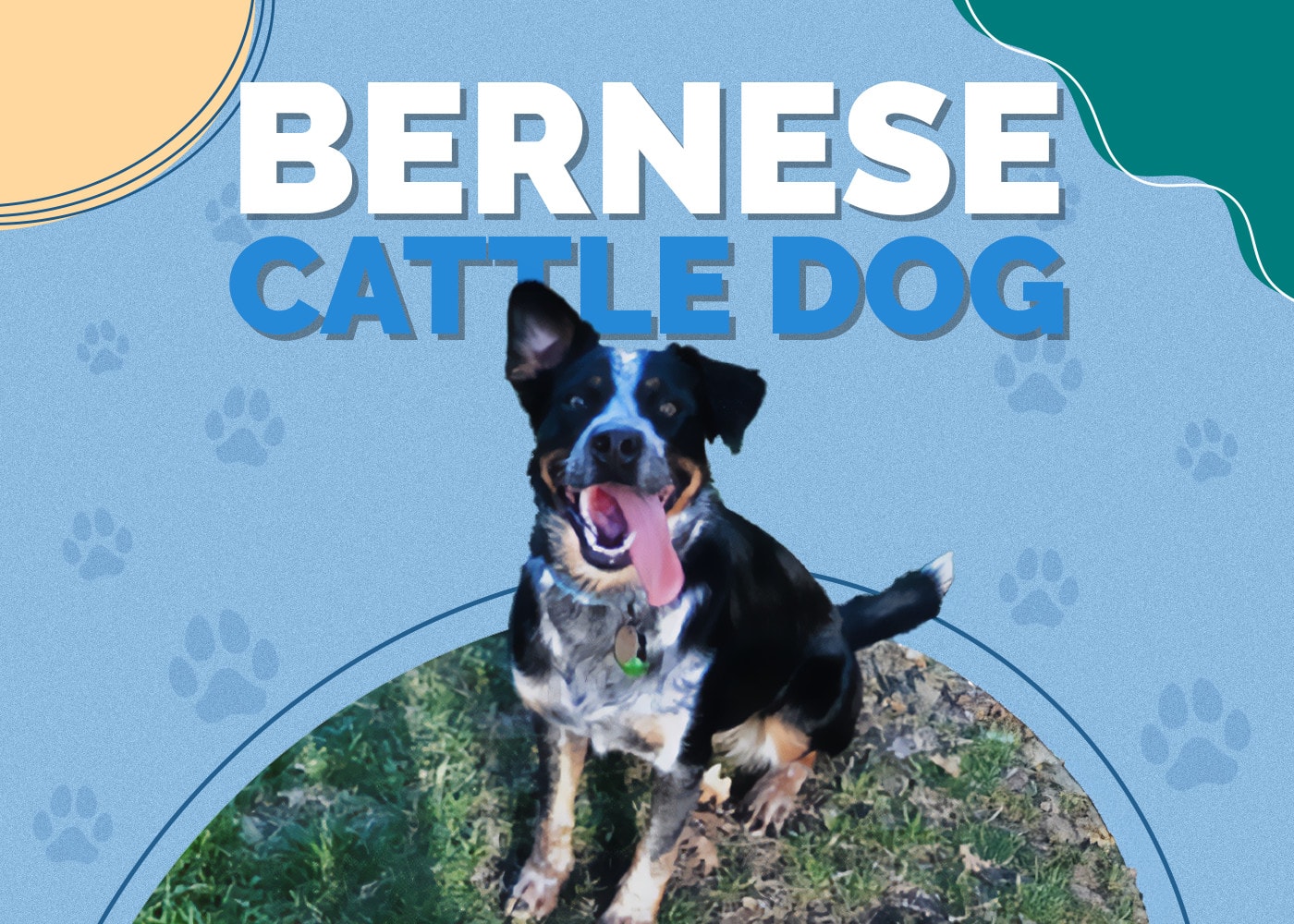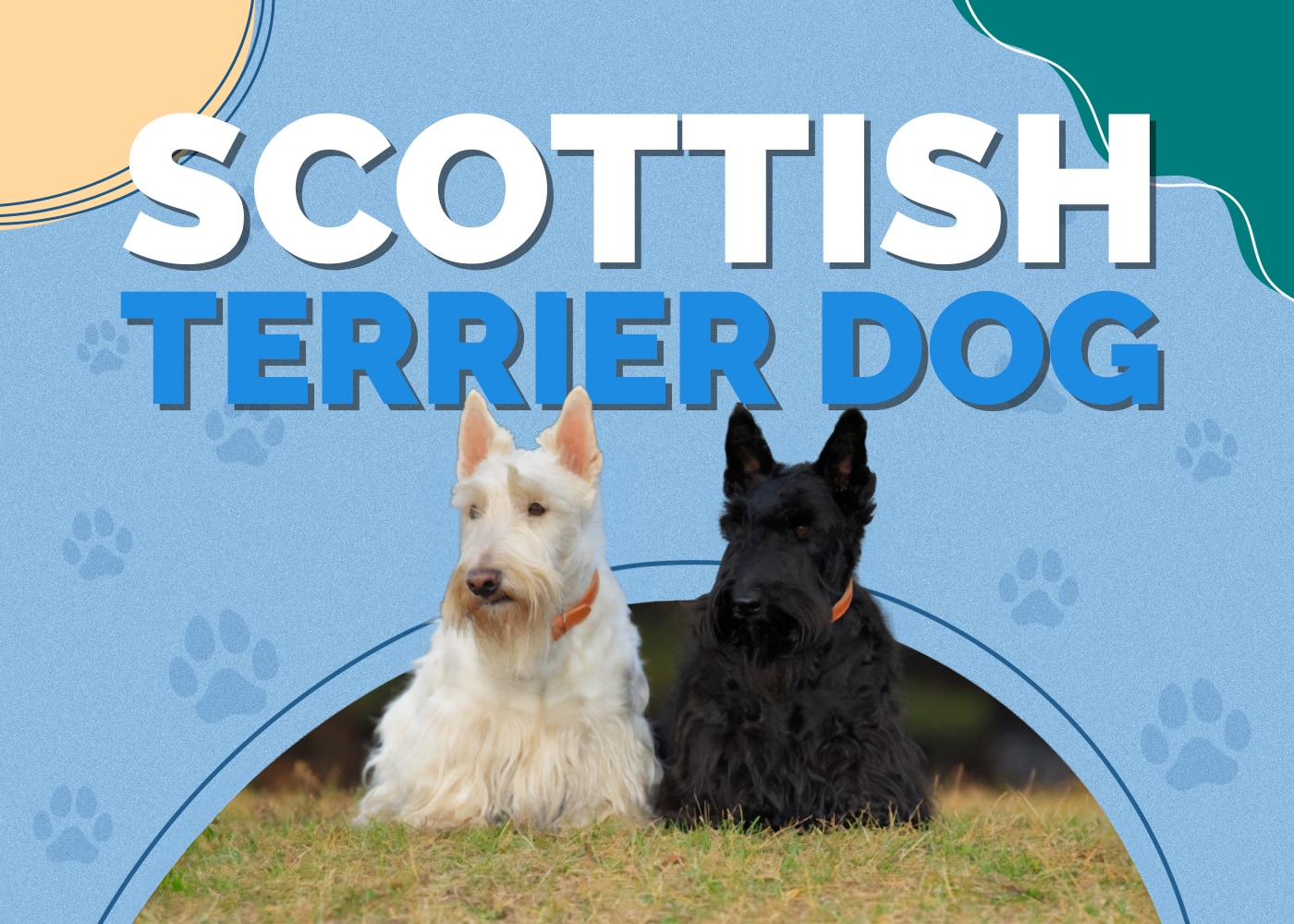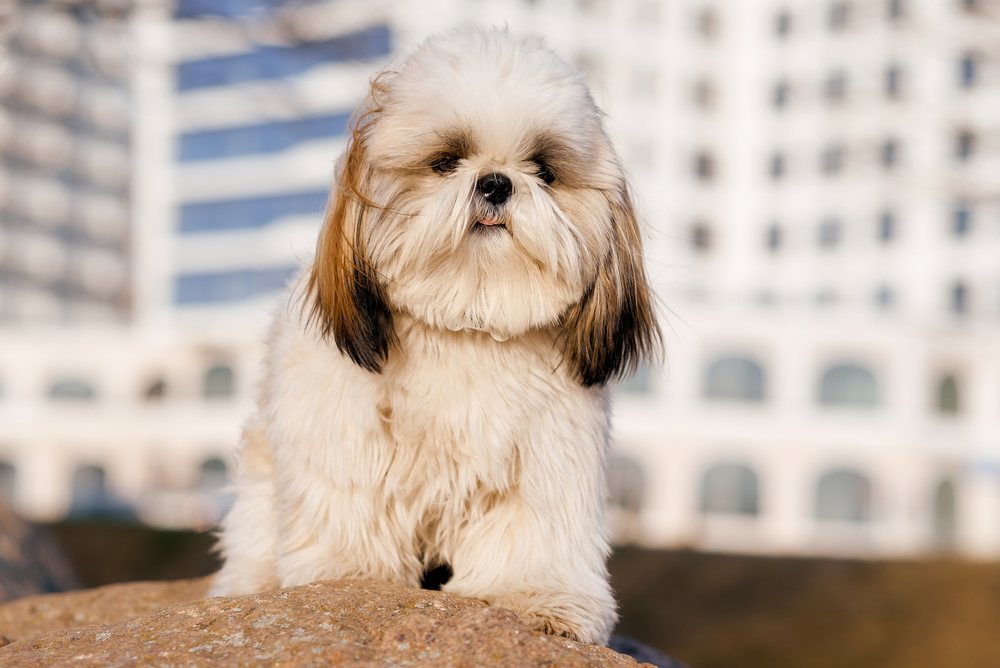Alaskan Malamute vs Siberian Husky: What’s the Difference?

Updated on
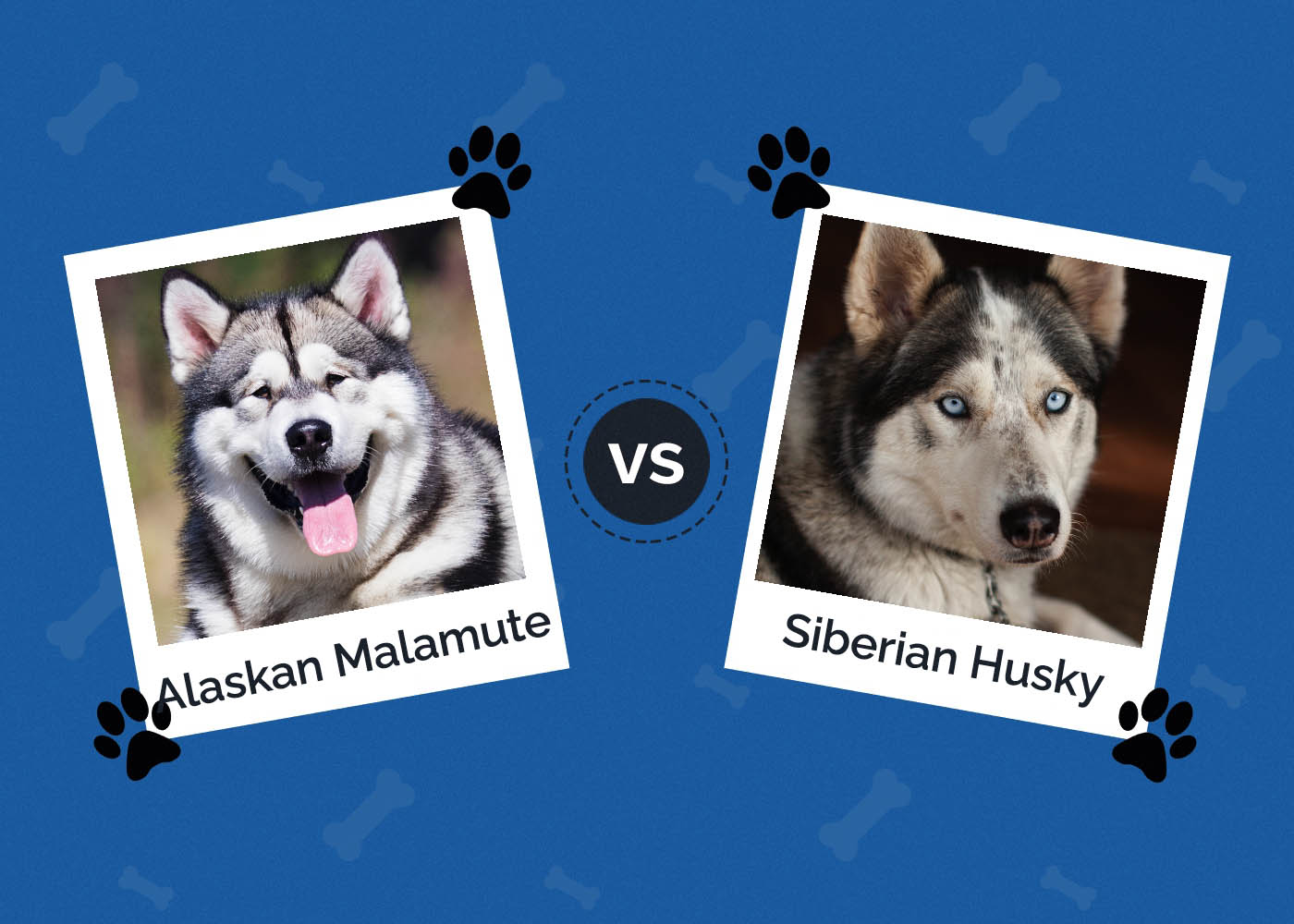
At first glance, Alaskan Malamutes and Siberian Huskies may look like the same breed. A smaller female Malamute can easily be mistaken for a Husky, while a larger male husky might be called a Malamute. They’re even from arctic regions, and both were bred for sledding, which can further the confusion and cause misidentification. However, even though they both come from similar climates and have similar origins, Malamutes and Huskies have their differences.
Let’s look at both the Alaskan Malamute and the Siberian Husky to get a better understanding of the key Malamute versus Husky differences.
Malamute vs Husky: Visual Differences
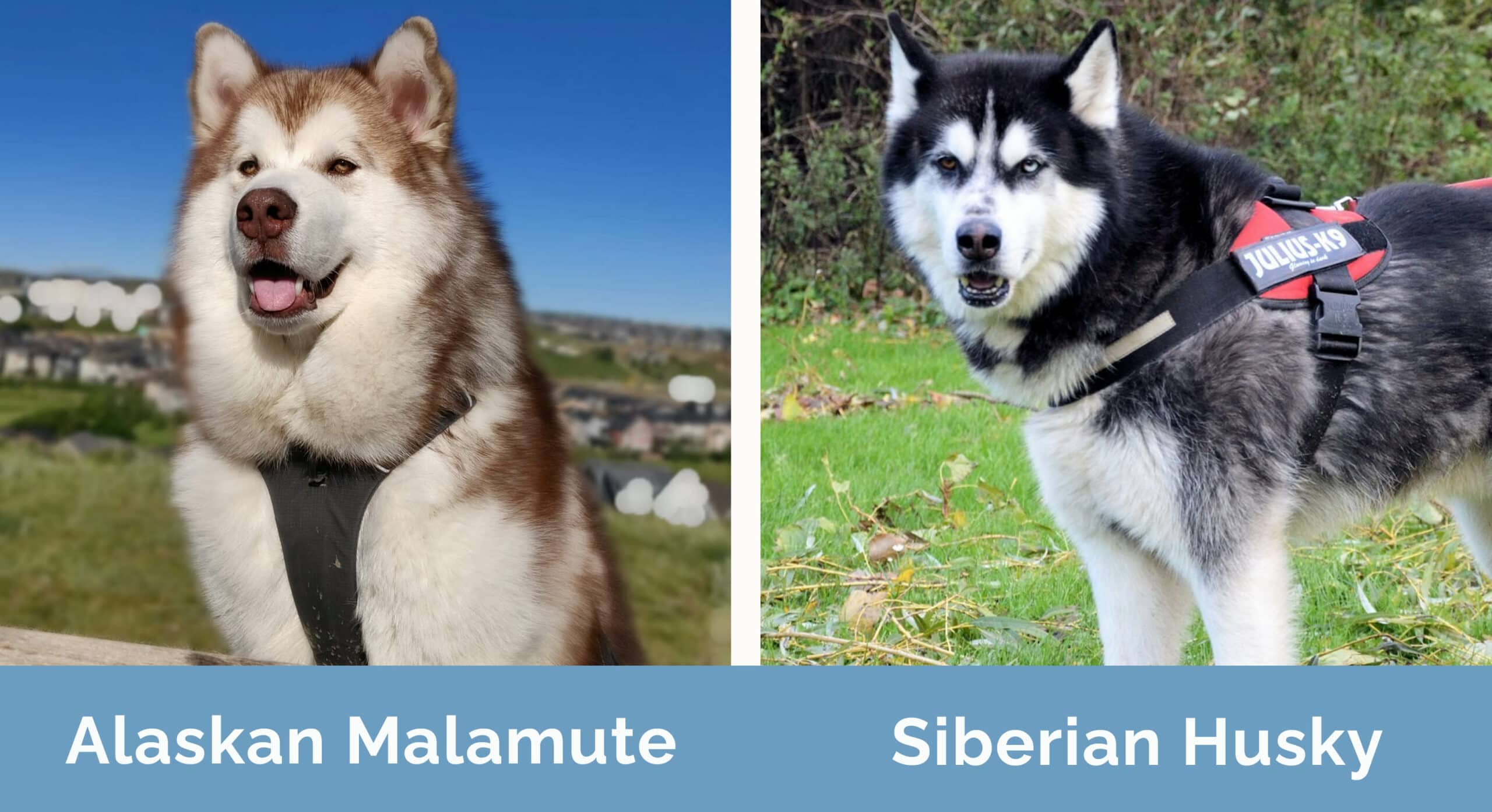
A Quick Overview
- Average height (adult): 22–27 inches
- Average weight (adult): 70–100 pounds
- Lifespan: 9–12 years
- Exercise: 3+ hours (can be more)
- Grooming needs: Moderate
- Family-friendly: Yes
- Dog-friendly: Yes
- Trainability: Can be difficult, needs experienced owner
- Average height (adult): 20–25 inches
- Average weight (adult): 35–65 pounds
- Lifespan: 9–12 years
- Exercise: 3+ hours (can be more)
- Grooming needs: Moderate
- Family-friendly: Yes
- Dog-friendly: Often
- Trainability: Can be difficult, needs experienced owner
Alaskan Malamute Overview
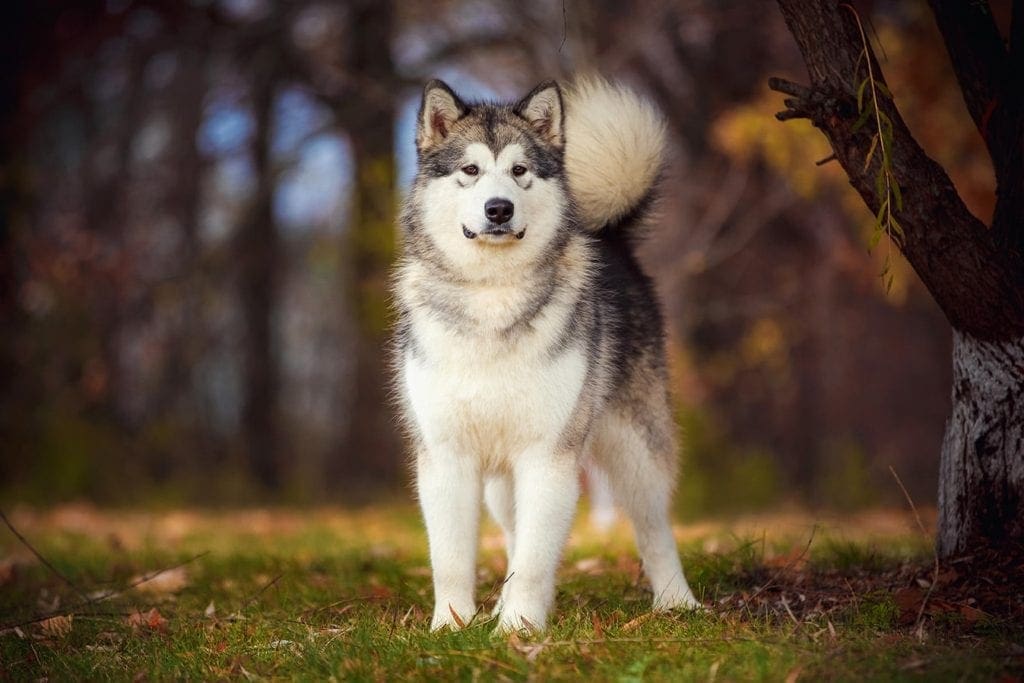
One of the oldest breeds in the dog world, the Alaskan Malamute has been around for a very long time. Considered a Basal breed like the Chow-Chow and a few other ancient breeds, these powerful arctic dogs were selectively bred for hunting, protection, and heavy-freight sled-pulling. They can seem intimidating, but these fluffy canines have a playful, affectionate side that make them wonderful companions as well. While they’re not the best choice for first-time dog owners, Malamutes can make great pets for active families.
Temperament
Alaskan Malamutes may seem like all work and no play, but that couldn’t be farther from the truth. These large dogs are playful and can be quite friendly with people as long as they’re socialized early. While they need quite a lot of exercise to burn off their working dog energy, Malamutes are very affectionate and need to spend time with their families. If they feel left out or ignored, they will take their frustration out on furniture, couches, and anything within their reach. Devoted and loyal to their families, Malamutes can be naturally protective but are rarely aggressive. They’re also quieter than Huskies, which is usually an important factor when looking into a dog breed.
Training
Training Alaskan Malamutes is no easy task for a variety of reasons, but mostly due to the fact that they bore easily and are not necessarily motivated to learn. Malamutes are not like most dog breeds and have a strong pack mentality, so it’s crucial to remain the leader at all times. Malamutes are far smarter than they seem and can do well with training, but their ability to sense weakness in new owners poses a big challenge. Positive reinforcement training is a great start, but hiring a professional trainer experienced with Malamutes is often necessary. However, once a Malamute understands its role in the “pack”, training will not be nearly as difficult.
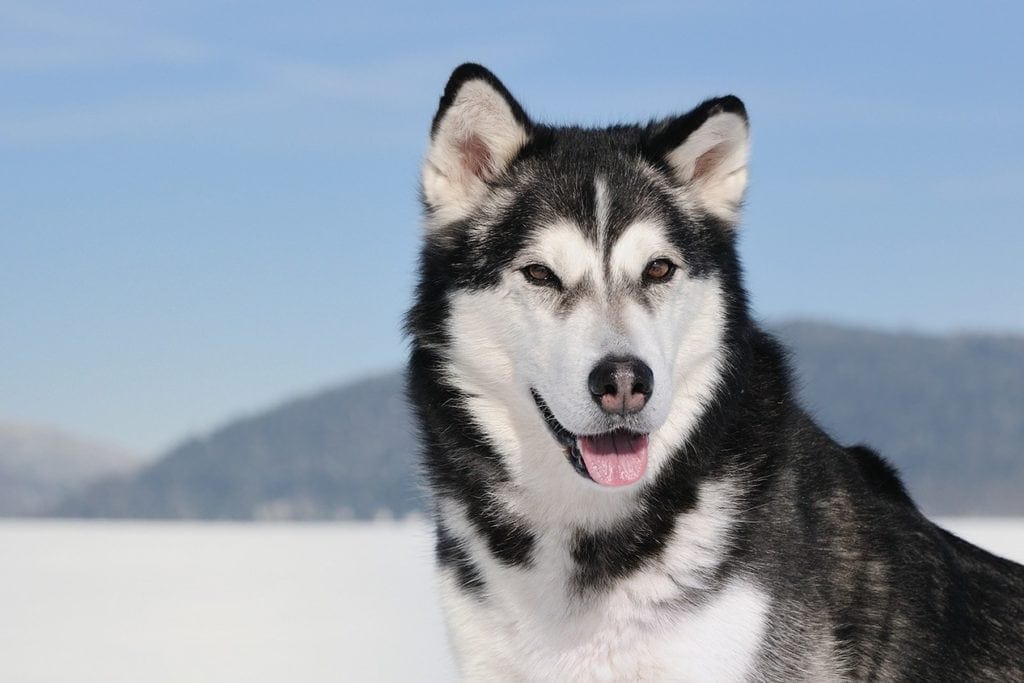
Exercise
Exercising is not only a requirement for Malamutes but a lifestyle for them. These are not the average working breed but a powerhouse of raw canine strength, which needs an outlet. Daily walks and playtime will not be enough- they need purpose, whether it’s sled-pulling work or something similar. Malamutes are excellent dogs for individuals and families who enjoy the outdoors, especially for long-distance hiking enthusiasts.
Grooming ✂️
First and foremost, never shave an Alaskan Malamute’s coat unless absolutely necessary. Their coats may never grow back the same, causing temperature-regulating issues. Brushing out the coat is important to help remove loose fur and debris, which should be done weekly. Malamutes shed their undercoats twice a year, so brushing is important to help with the shedding process. Limit bathing to once or twice a year because the thick undercoats that Malamutes have can trap moisture, leading to skin irritation.
- Friendly
- Smart and playful
- Good with families
- Minimal grooming
- Hard to train
- Need lots of exercise and food
Siberian Husky Overview
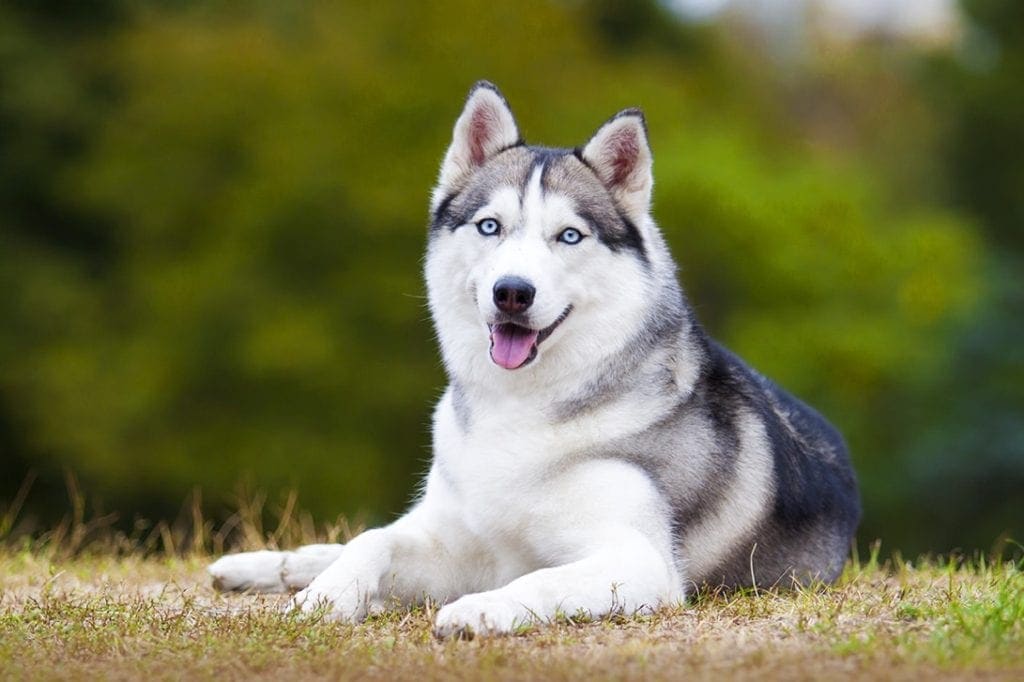
Similar to Alaskan Malamutes, Siberian Huskies are also one of the few Basal breeds still around today. They were also bred for the same reasons, though they’re mostly known for their sled-pulling and extreme endurance. Leaner and lighter than Malamutes, Siberian Huskies are faster than their Malamute cousins and are known for their endurance while sled racing. Although they’re not suitable for sedentary lifestyles and apartment living, Siberian Huskies can make excellent pets for the right family.
Temperament
Siberian Huskies are known for their hyperactive temperaments, which can be an understatement if a new Husky owner is unprepared. Huskies do best when they have a purpose or job in life, even if it’s as simple as sport sledding. Because of their high energy levels, Huskies can get bored quite easily and are very prone to separation anxiety. Huskies are more vocal than Malamutes, which is one of many reasons why they’re not suitable for apartments. For new dog owners, Huskies can simply be too much and may feel vastly overwhelmed by their energy. However, these dogs are similar to Malamutes in that they are also affectionate and loving companions.
Training 🦮
Siberian Huskies are similar to Alaskan Malamutes when it comes to training so that pack mentality will also prevail. Training needs to start immediately, but they’re also not known for their eagerness to please. Huskies get frustrated and bored easily and may vocalize it, which can be stressful for inexperienced dog owners. Positive reinforcement training is also great for Huskies, but many new owners find themselves hiring a dog trainer for guidance. It’s important to understand that Huskies are very intelligent and can excel in obedience, but they have a serious independent side that makes them less willing than other breeds.

Exercise 🐕
Siberian Huskies were bred for endurance, so exercising is in their genes and temperament. Like the Malamute, Huskies need much more than a few walks a day. These arctic sled dogs are an obvious choice for sled racing and winter-based sports, but they can be great hiking companions for very active families. For families and individuals looking at Huskies, it is essential to have the time for this highly energetic breed, or they will develop destructive behavior.
Grooming ✂️
Similar to the Malamute, never shave a Husky’s coat unless it’s absolutely necessary. Brushing out the coat once a week will help to slightly reduce shedding and get rid of any snarls in the top coat. New Husky owners are sometimes alarmed at the amount of fur that comes out when brushing, especially when it’s undercoat shedding season. Bathing Huskies needs to also be limited to once or twice a year since they’re not known for having coat odor. Overbathing can cause skin problems that may never go away, causing unnecessary pain and itching.
- High energy
- Affectionate
- Easy to groom
- Not easy to train
- Need lots of exercise and food
Health Conditions for Both Dogs
Alaskan Malamutes and Siberian Huskies are prone to a few conditions that most big dogs are, but they also have a long history of selective breeding to help keep the breed healthy. Malamutes and Huskies are generally healthy dogs and were bred to be healthy and robust, but any dog can develop a serious condition. If your dog shows any signs of pain, swelling, or discomfort, it’s best to call your vet to catch any serious conditions at an early stage. Especially with conditions like canine hip dysplasia, it’s crucial to treat it as soon as it has developed.
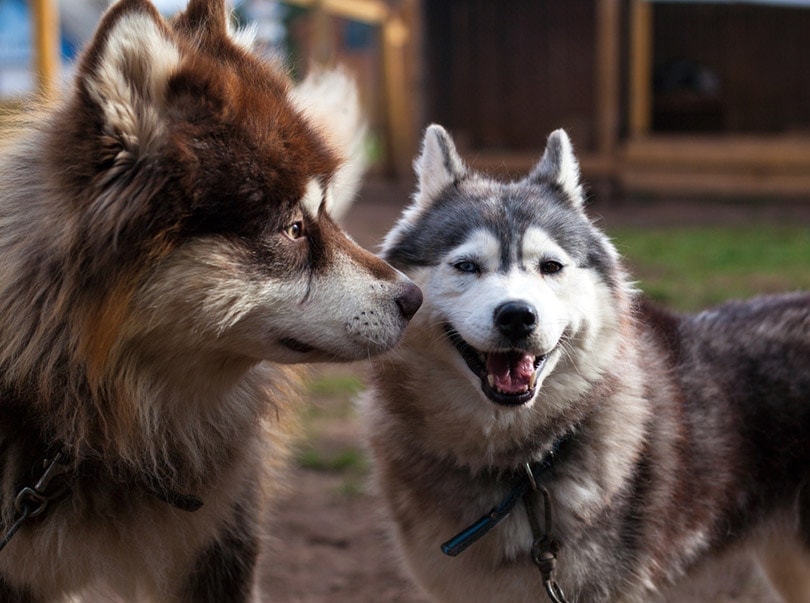
- Canine hip dysplasia
- Hypothyroidism
- Bloat/GDV
- Dry/irritated skin
- Hemophilia A/B
- Von Willebrand’s disease
- Cataracts
- Canine hip dysplasia
- Hypothyroidism
- Progressive retinal atrophy
- Follicular dysplasia
- Skin irritation/allergies
- Bloat/GDV
- Digestive issues
Alaskan Malamute vs Husky: Final Thoughts
Alaskan Malamutes and Siberian Huskies have a lot in common: they’re both sled dogs, they both have high energy levels, and they’re both tricky in the training department. However, Malamutes and Huskies have a few important differences that set them apart. Malamutes are much bigger and known more for power, whereas Huskies are much leaner and known for their speed. Huskies are very vocal and loud, while Malamutes are on a quieter scale. In the end, Alaskan Malamutes and Siberian Huskies are both similar and different in their own distinct ways. If you’re looking into getting a Malamute or Husky, we hope this guide will help you narrow down which one will suit your lifestyle more.
See Also:
- Samoyed vs Husky: Differences Explained (With Pictures)
- Rottweiler vs German Shepherd: Which Dog to Choose?
Featured Image Credit: (L) Happy monkey, Shutterstock | (R) Regular Man, Unsplash





